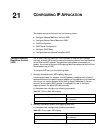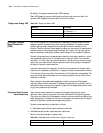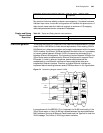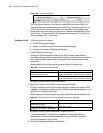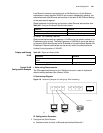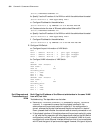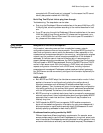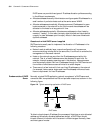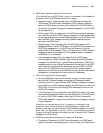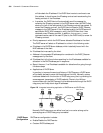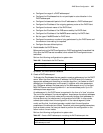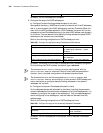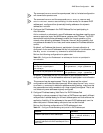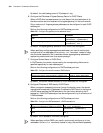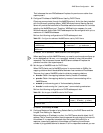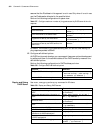DHCP Server Configuration 335
■ DHCP client logins the network for the first time
If it is the first time for a DHCP client to login to the network, it will establish a
connection with the DHCP server through four stages:
■ Discovering stage. This is the stage when the DHCP client searches the
DHCP servers. The DHCP client broadcasts a DHCP_Discover message to
search the DHCP servers, and every host installed with the TCP/IP suite on
the network will receive this type of broadcast message but only the DHCP
servers respond to it.
■ Offering stage. This is the stage when the DHCP servers offer IP addresses.
Upon receiving the client DHCP_Discover message, the DHCP servers select
an unallocated IP address from the IP address pools for the DHCP client, and
send the DHCP_Offer message containing leased IP address and other
settings to the DHCP client.
■ Selecting stage. This is the stage when the DHCP client selects the IP
address offered by a certain DHCP server. If multiple DHCP servers send the
DHCP_Offer messages to it, the DHCP client will accept only the first
received DHCP_Offer message. Then, it will respond with a DHCP_Request
message by means of broadcasting. This message requests the selected
DHCP server for an IP address.
■ Acknowledgement stage. This is the stage when the DHCP server
acknowledges the offered IP address. Upon receiving the DHCP_Request
message from the DHCP client, the DHCP server sends back a DHCP_ACK
message containing the offered IP address and other settings to the DHCP
client, advising that the offered IP address can be used. Then, the DHCP
client will bind its TCP/IP suite with the network card. Except the server
selected by the DHCP client, other DHCP servers will use their unallocated IP
addresses for the applications of other clients for IP addresses.
■ DHCP client logs into the network again:
■ Once the DHCP client logs into the network correctly, it merely needs to
send the DHCP_Request message containing the IP address allocated
previously (there is no need to send a DHCP_Discover message once again).
■ Upon receiving the DHCP_Request message, the DHCP server will allow the
DHCP client to continue to use the original IP address and will return the
DHCP_ACK message.
■ If the IP address can not be allocated to the DHCP client again (in this case,
the IP address has been allocated to another DHCP client), the DHCP server
will return a DHCP_NAK message. When the DHCP client receives the
DHCP_NAK message, it needs to send a DHCP_Discover message to request
a new IP address.
In addition, you can use the ipconfig /release_all command in the
command line on the user PC (that is, the DHCP client) to release the IP
address. In this case, the user PC sends a DHCP_Release message to the DHCP
server. Then, you can use the
ipconfig /renew_all command on the user PC
to apply for a new IP address. In this case, the user PC sends a DHCP_Discover
message to the DHCP server.
■ DHCP client extends the valid period for leasing the IP address:
■ The dynamic IP address of the DHCP client allocated by the DHCP server
usually has a certain valid leasing period. Upon the expiry, the DHCP server



